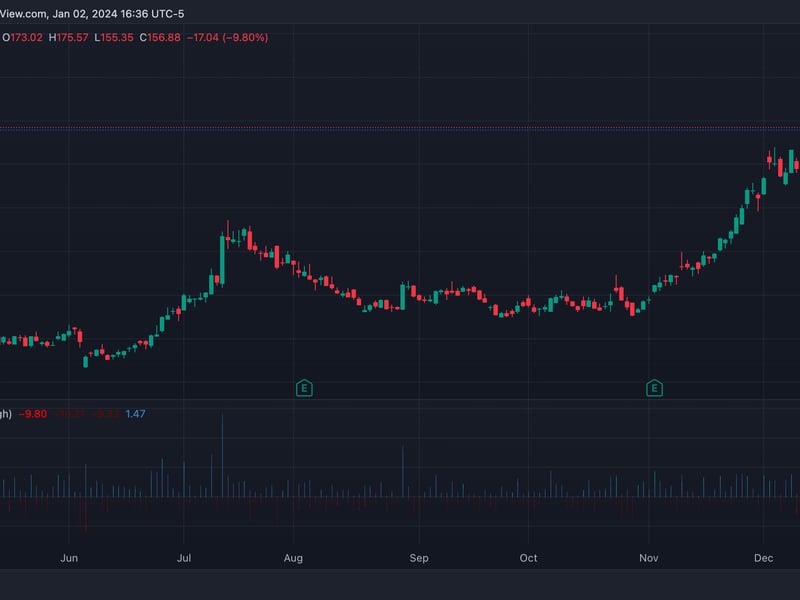Bitmain Shifts Miner Sales Tactics, Betting Big on Bitcoin Halving Pump
Jihan Wu of Bitmain, image via CoinDesk archives
Bitcoin mining colossus Bitmain has rejiggered its sales strategy to reverse a decline in market share following the return of co-founder Jihan Wu to the company’s helm.
At a customer event hosted by Bitmain on Saturday in Chengdu, China, Wu appeared on stage for the first time as the sole chairman and CEO a month after regaining control. Addressing clients and partners, he presented new strategies to restore Bitmain’s waning market dominance.
In essence, he proposed to sway miners to stick with Bitmain’s products by having the company take on the risks related to cash flow, bitcoin price volatility and electricity costs.
As such, Bitmain is betting big that bitcoin’s price will jump next year amid the scheduled halving of mining rewards, which will reduce new supply created with each block of transactions. Whether the next halving will actually spark a rally like the first two did is a subject of debate currently.
While the event was exclusive for customers, screenshots of the firm’s presentation deck seen and verified by CoinDesk show that Bitmain has rolled out three main tactics to appeal to mining investors.
To begin with, it appears Bitmain has replaced its previous sales strategy, wherein customers had to pay the full amount upfront for mining equipment due for future shipment, with a tired down payment structure.
For instance, customers that pre-order 100 to 999 miners can put 50 percent down while larger investors purchasing more than 5,000 units can pay a minimum 20 percent upfront.
The rest of the payments need to be cleared seven days prior to the actual shipment date. But the upshot is this would shift the short-term cash flow pressure away from customers toward Bitmain itself.
A second tactic that Bitmain plans to roll out targets those who own mining farms with power resources but do not yet have enough equipment to run at full capacity.
The firm said it will offer a co-mining agreement that runs over a year for mining farm operators to rent its flagship AntMiner S17 or T17 products. Bitmain would cover the year-round electricity cost at 0.35 yuan ($0.05) per kilowatt-hour while mining farm operators remain responsible for maintenance.
In return, Bitmain will retain 75 percent of the mining profits and farm operators will take the remaining 25 percent. Notably, if the mining revenue is less than the electricity cost, all the mined coins would go to Bitmain, the presentation deck shows.
Through this plan, Bitmain could once again increase its capacity in mining for itself – an investment that has decreased over the past two years as the company focused more on selling equipment.
CoinDesk reported earlier this year that Bitmain decreased its self-owned bitcoin hash power to just 237 peta hashes per second (PH/s) in May – an 88 percent drop from April – accounting for around 0.5 percent of the network’s total power.
Yet based on the company’s latest disclosure, its proprietary mining power has rebounded over the past six months to 930 PH/s as of Dec. 5, taking about one percent of the network’s total hash rate.
Further, Bitmain now seeks to ease mining investors’ concerns regarding bitcoin’s price volatility by giving out a put option to those who make product orders in large quantities.
For example, for users who purchase 1,000 units of AntMiner S17 Pro, worth about $1.5 million, the firm will give away 62 put options, worth in total one percent of the miner order amount. Each put option would allow customers to sell bitcoin at a price of 35,000 yuan ($5,000) on March 27.
If bitcoin’s price hovers higher than $5,000 by that date, it would be a losing proposition to exercise the option. If it’s below the threshold, customers could exercise the option to make a profit, the size of which depends on how much lower bitcoin’s price would be below $5,000 at that time. Bitmain would be the counter-party bearing the cost.
It remains to be seen whether Bitmain’s new strategies will succeed. But the shift is a sign of intensifying competition in the mining business.
In a recent all-hands meeting, Wu admitted to his staff that Bitmain’s market dominance in mining equipment and mining pool hash rate have been declining throughout the year.
And it was for that reason that he chose to return to the management of the firm by making a surprising move that ousted his co-founder Micree Zhan as chairman.
Meanwhile, competition among major miner makers in China is still racing nonstop ahead of bitcoin’s halving next year with Shenzhen-based WhatsMiner manufacturer MicroBT launching its flagship M30 series of miners.
Also on Saturday, MicroBT released the new line of products. They boast a hashing power of 88 tera hashes per second with energy consumption as low as 38 joules per terahash.
Canaan, the world’s second-largest miner maker, recently completed an initial public offering on the NASDAQ stock exchange, raising $90 million in new capital.
Disclosure Read More
The leader in blockchain news, CoinDesk is a media outlet that strives for the highest journalistic standards and abides by a strict set of editorial policies. CoinDesk is an independent operating subsidiary of Digital Currency Group, which invests in cryptocurrencies and blockchain startups.









